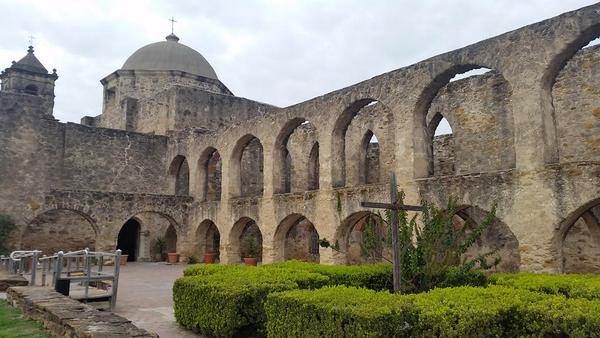Spanish Heritage
The roots of Texas history are deeply influenced by Spanish heritage. The Spanish Missions in Texas introduced livestock, fruits, vegetables and industry into the Texas region. In all, 26 Missions were maintained within the present boundaries of the state, and Texans and visitors still have the opportunity to visit these centuries-old historical sites today.
The first and most widely known of these missions is San Antonio de Valero, commonly known as The Alamo. It was established in the early 1700s and played a crucial role in the settlement of San Antonio, Texas and the Southwest.

Photo courtesy of the San Antonio CVB.
The four southernmost Spanish colonial missions—Concepción, San José, San Juan and Espada—are included in the San Antonio Missions National Historical Park and have been nominated to become a World Heritage Site. San José y San Miguel de Aguayo, the “Queen of the Missions,” is the largest mission in San Antonio and was established in 1720 before reaching completion in 1782. It provided sanctuary and social and cultural community for more than 300 Native Americans, and was surrounded by acres of fields and livestock herds. Mission Concepción currently stands as the oldest unrestored stone church in the country and looks much like it did in 1755 when it was first dedicated. Some of the original frescos remain in the mission’s rooms.
Along the San Antonio River in Goliad stands the Mission Espiritu Santo, which is listed in the National Register of Historic Places. Although the original brick and stone of the building has deteriorated, heritage travelers can tour the Mission building reconstructed by the Civilian Conservation Corps, where artifacts from the original Mission remain on display.
Although the original stone and mortar structures of the Missions have not all withstood the test of time, their spirit certainly has. I encourage you to visit these sites for a unique learning experience you can’t get from history books alone!
